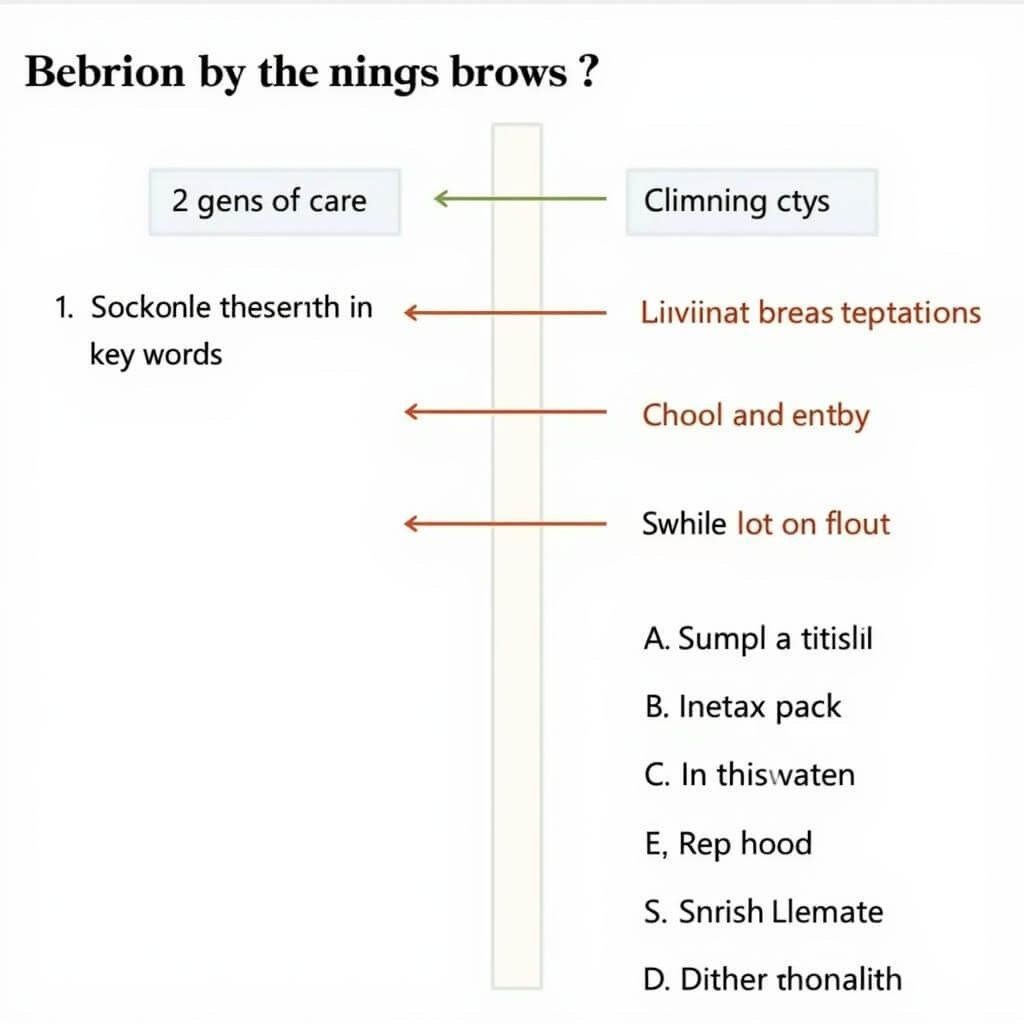IELTS Reading can be a challenging section, especially when it comes to matching headings questions. These questions require a unique approach and specific strategies to tackle them effectively. In this comprehensive guide, we’ll explore how to approach matching headings questions in IELTS Reading, providing you with valuable tips and techniques to boost your performance.
Understanding Matching Headings Questions
Matching headings questions are a common type of task in the IELTS Reading section. They require you to match a list of headings to paragraphs or sections of the given text. This task assesses your ability to identify the main idea or theme of each paragraph.
Why are Matching Headings Questions Challenging?
- They require a deep understanding of the entire passage
- Headings can be worded differently from the text
- Distractors (incorrect options) are often cleverly designed to confuse test-takers
How to analyze IELTS reading questions?
Effective Strategies for Approaching Matching Headings Questions
1. Skim the Passage First
Before diving into the headings, quickly skim through the entire passage to get a general idea of its content and structure.
2. Analyze the Headings
Read through all the headings carefully, identifying key words and themes. This will give you an idea of what to look for in the paragraphs.
3. Focus on Topic Sentences
Pay special attention to the first and last sentences of each paragraph, as they often contain the main idea.
How to tackle IELTS reading matching headings efficiently
4. Look for Synonyms and Paraphrases
Remember that headings rarely use the exact words from the text. Look for synonyms and paraphrased ideas.
5. Eliminate Incorrect Options
As you match headings, cross them off your list. This will help you narrow down your choices for the remaining paragraphs.
6. Use the Process of Elimination
If you’re unsure about a heading, try to eliminate options that definitely don’t fit.

7. Practice Time Management
Allocate your time wisely. Don’t spend too long on any single question.
Common Pitfalls to Avoid
- Don’t rely solely on key words
- Avoid choosing headings based on minor details
- Don’t assume the headings will appear in the same order as the paragraphs
Dr. Emma Thompson, an IELTS expert with over 15 years of experience, advises: “Many students fall into the trap of matching headings based on individual words rather than overall meaning. Always focus on the main idea of the paragraph, not just familiar vocabulary.”
How to tackle tricky questions in IELTS reading
Advanced Techniques for Matching Headings
1. Identify Paragraph Types
Recognizing different paragraph types (e.g., cause-effect, problem-solution) can help you match headings more accurately.
2. Look for Signposting Language
Words and phrases that indicate the paragraph’s purpose or direction can be valuable clues.
3. Consider the Author’s Tone
The tone of the paragraph (e.g., critical, supportive, neutral) can help you match it to the appropriate heading.
Improving accuracy for paragraph matching
4. Use Contextual Clues
Sometimes, understanding the context of the entire passage can help you deduce the correct heading for a challenging paragraph.
Practice Makes Perfect
The key to mastering matching headings questions is consistent practice. IELTS trainer Sarah Johnson recommends: “Dedicate at least 30 minutes each day to practicing matching headings exercises. Over time, you’ll develop a sixth sense for identifying main ideas quickly and accurately.”
How to approach IELTS reading completion questions?
Conclusion
Approaching matching headings questions in IELTS Reading requires a combination of careful analysis, strategic thinking, and practice. By implementing the techniques discussed in this guide and avoiding common pitfalls, you can significantly improve your performance on this challenging question type. Remember to focus on main ideas, use the process of elimination, and practice regularly to hone your skills. With dedication and the right approach, you’ll be well-equipped to tackle matching headings questions confidently in your IELTS exam.
Frequently Asked Questions
How many matching headings questions are typically in an IELTS Reading test?
There is usually one matching headings task per IELTS Reading test, typically containing 5-7 paragraphs to match.
Can I write on the question paper during the IELTS Reading test?
Yes, you can make notes and annotations on the question paper. This can be particularly helpful for matching headings questions.
What if I can’t find a perfect match for a heading?
Choose the heading that best represents the main idea of the paragraph, even if it’s not a perfect match.
Is it better to read all the paragraphs first or to match headings as I go?
It’s generally more efficient to skim all paragraphs quickly first, then go back and match headings one by one.
How can I improve my speed in matching headings questions?
Regular practice, focusing on topic sentences, and developing your skimming skills are key to improving your speed.